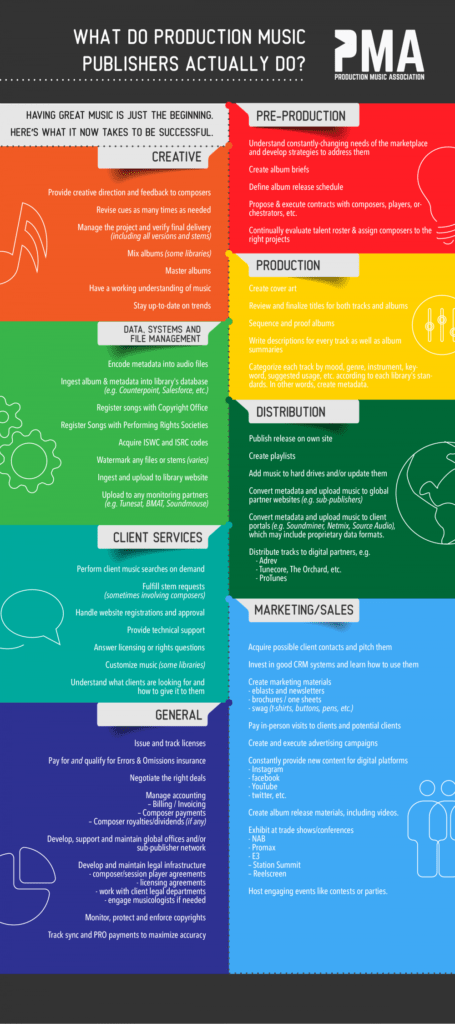


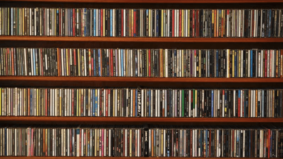
Get the facts before you decide.
Many composers and songwriters are lately being offered what seems like a deal too good to pass up: get film/TV placements of their music and a share of sync fees from non-exclusive distributors while retaining 100% of their copyrights. While this may appear to be an irresistible bargain on the surface, it is essential that writers fully understand the ramifications of this business model in order to make an informed decision.
What Is Non-Exclusive Retitling?
First, let’s clarify what is meant by the term “retitled libraries”. This term does not refer to libraries that exclusively own the rights to their works and for whatever reason decide to re-release the works under alternate titles; it is a library’s prerogative to re-release or repurpose tracks in such a manner. Rather, for the purposes of this article, this term shall refer to libraries that engage in the practice of retitling tracks without obtaining exclusive rights to the works. For these libraries, retitling is simply a way to market and license non-exclusive content and collect performance revenues by registering existing works under different titles.
How Does It Work?
Retitled libraries solicit content from composers or songwriters promising that they will “retain ownership” in the works and simply license their tracks on a “non-exclusive” basis. They offer to retitle the works and share publishing revenue generated from their placements of the retitled tracks. (There is generally no upfront cost involved for the writer, although a few retitled libraries have been known to retain all or part of the writers share of performance royalties- a definite “red flag”). This sort of arrangement can obviously be appealing to a writer who might have dozens of songs, scores, demos and other unused musical material just “sitting on the shelf” gathering dust. Why not monetize these tracks to generate some extra revenue? For that matter, why not sign the same tracks with as many retitling services as possible to maximize income? Before signing away your tracks, let’s delve a little deeper and explore some of the repercussions of these deals.
One Song, Many Titles
The most obvious drawback with this model is apparent on the client side of the equation. With more and more companies dumping retitled content onto the market, situations are starting to arise where multiple parties are claiming ownership in the same work. In fact, several top Hollywood music supervisors are now refusing to accept material from retitled libraries after being pitched the same song from different sources under different titles (and at different rates!). The potential for confusion has led at least one major studio to issue an edict stating that they will only work with music companies that represent their content exclusively.
Similarly, for broadcasters or other library clients who are often highly sensitive about market exclusivity, it could be devastating to sign a deal with library X only to hear the same tracks used by a competing station who signed a deal with library Y. Such a scenario could easily happen if both libraries are offering retitled music.
On an industry level, it is hard to argue that the industry will benefit from situations where multiple parties are claiming rights to the same song and bidding against each other for the same placement. This practice only serves to further erode sync fees and devalue music in an already hypercompetitive marketplace, as well as feed cynicism and mistrust towards the production music industry in general. There is, after all, a certain aspect of duplicity surrounding the notion of the same piece of music having multiple title aliases depending on the situation or vendor. Such confusion, if unabated, will just encourage more unreported music uses and piracy due to the lack of publishers’ ability to effectively monitor and police their works. Furthermore, at a time when music rights are under siege by legislators, broadcasters and technology companies alike, it is safe to say that adding more confusion and uncertainty to the music rights landscape is probably not a sanguine development for the industry.
Identical Fingerprints
It is widely accepted in the music community that fingerprinting , in one form or another, holds the key to performance monitoring in the years ahead. ASCAP and BMI have already tested and implemented fingerprinting technology on a limited basis (Mediaguide and Landmark, respectively), and a more extensive rollout of these technologies is planned in the near future. Since every piece of audio contains a unique “fingerprint”, the day will soon come when digital algorithms will automatically detect each piece of music and (ideally) every performance will be tracked and paid- without the hassle of cue sheets or the burden of physically watermarking every track. Most libraries consider fingerprinting to be a critical step towards improving the fairness and accuracy of PRO distributions. In addition to performance tracking, fingerprinting systems are also being increasingly used by libraries to monitor sync uses of their catalog and by broadcasters to automatically generate cue sheets.
All of these scenarios present an obvious conundrum for retitled music companies: since their audio files are not unique, each detection can no longer be linked to a unique title record, making accurate performance identification virtually impossible. Clearly, the practice of retitling only serves to stymie these important initiatives and therefore runs counter to the best interests of the industry.
Legal Challenges Loom
It is only a matter of time before legal challenges arise from these practices. Whose title of a song was ultimately used in a film or TV show if multiple versions were pitched? Which title and which master are being referenced in a composer contract? Is anyone vetting these tracks for rights clearances or potential infringement issues? Do these companies even have the legal right to license these tracks, considering that copyrights are based not on title (titles are not copyrightable) but on the underlying composition and sound recording? How many non-exclusive catalogs have unwittingly entered into exclusive overseas subpublishing deals? Only time will tell how these issues will play out on the legal front.
The Artist Perspective
Industry considerations aside, what’s in it for the artist? The argument is often made that this model “helps artists” by allowing them to “retain control” while giving them “exposure” and generating “additional income”. To some extent, this may be true; a writer can sign a track with a retitled library while still releasing it on an album or otherwise exploiting it themselves. But often overlooked is the downside: once a writer signs a non-exclusive deal, that basically preempts any future possibility of signing an exclusive deal with another library or label. No reputable exclusive library is going to acquire or distribute a track that already exists in other permutations in the marketplace, and such exclusive libraries represent the majority of library music use in film and television. What may seem like a great deal is actually a dead end.
Writers also tend to overlook the fact that non-exclusive libraries are less likely to actively promote or pitch their tracks since they have less incentive to do so. These companies know that the same recordings might be available on other services, so often the tracks are just dumped on a drive or server and forgotten.
Another little known but critically important fact is that non-exclusive retitled catalogs miss out on significant revenue streams related to international distribution. Since libraries are generally represented by territory on an exclusive basis, retitled libraries technically cannot enter into these deals (to the extent that they do anyway, they are in breach of their contract). To drill down further, in many foreign territories music licensing is strictly controlled by mechanical copyright societies such as MCPS (UK), SDRM (France) and AMCOS (Australia). These societies, who are responsible for the vast majority of licensing in their respective territories, set the rates for music licenses as well as collect and distribute payments to composer and publisher members. In order for works to be represented by these societies, they must be the exclusive agents for their territory. Since non-exclusive content is often made available on websites or drives without regard to international borders, these catalogs do not qualify for registration and consequently their international income potential is severely limited. In the event a publisher or website representing non-exclusive content does attempt to register tracks with one of these mechanical societies, both the writer and the publisher will be in a potential breach of contract situation.
Last but not least is the new title itself: is it as effective and appropriate as the original title? Song titles should not be randomly generated or done in bulk fashion; they are more important than ever as they play a critical role in determining which songs get selected and auditioned by clients. It is not an obvious thing to effectively retitle a song with lyrics; by way of example, can you think of an alternate title for any of these hit songs: “Beat It”, ‘Like A Virgin”, “Hard Day’s Night” or “Are You Lonesome Tonight”? In lieu of donning a new title, some retitling services have resorted to simply adding a catalog number to precede the original title, i.e. “xyz001-My Love”, “xy002-My Love”, etc. It is hard to imagine how this scheme will accomplish anything except raise the amount of confusion among writers, clients and PROs to a whole new level.
Ultimately, writers need to weigh the perceived benefits of retitling against the potential pitfalls:
A Song Is Still A Song
In conclusion, the practice of retitling does not pose a problem if the same entity, or combination of entities, controls the rights to all title variations of the same track; however it is very much a problem when multiple entitles lay claim to the same work non-exclusively based solely on title permutations.
Amidst all the technological change and upheaval buffeting the music industry over the past several years, some things still haven’t changed: a song is still a song and should not have multiple aliases depending on the situation or “who got the placement.” Clearly, the best strategy for composers and songwriters is to take the time to craft original, high quality music and develop a solid relationship with a reputable library that can represent their tracks exclusively and invest the necessary time and resources to properly tag, organize, promote and pitch their tracks. Integrity still counts, especially in the digital age.
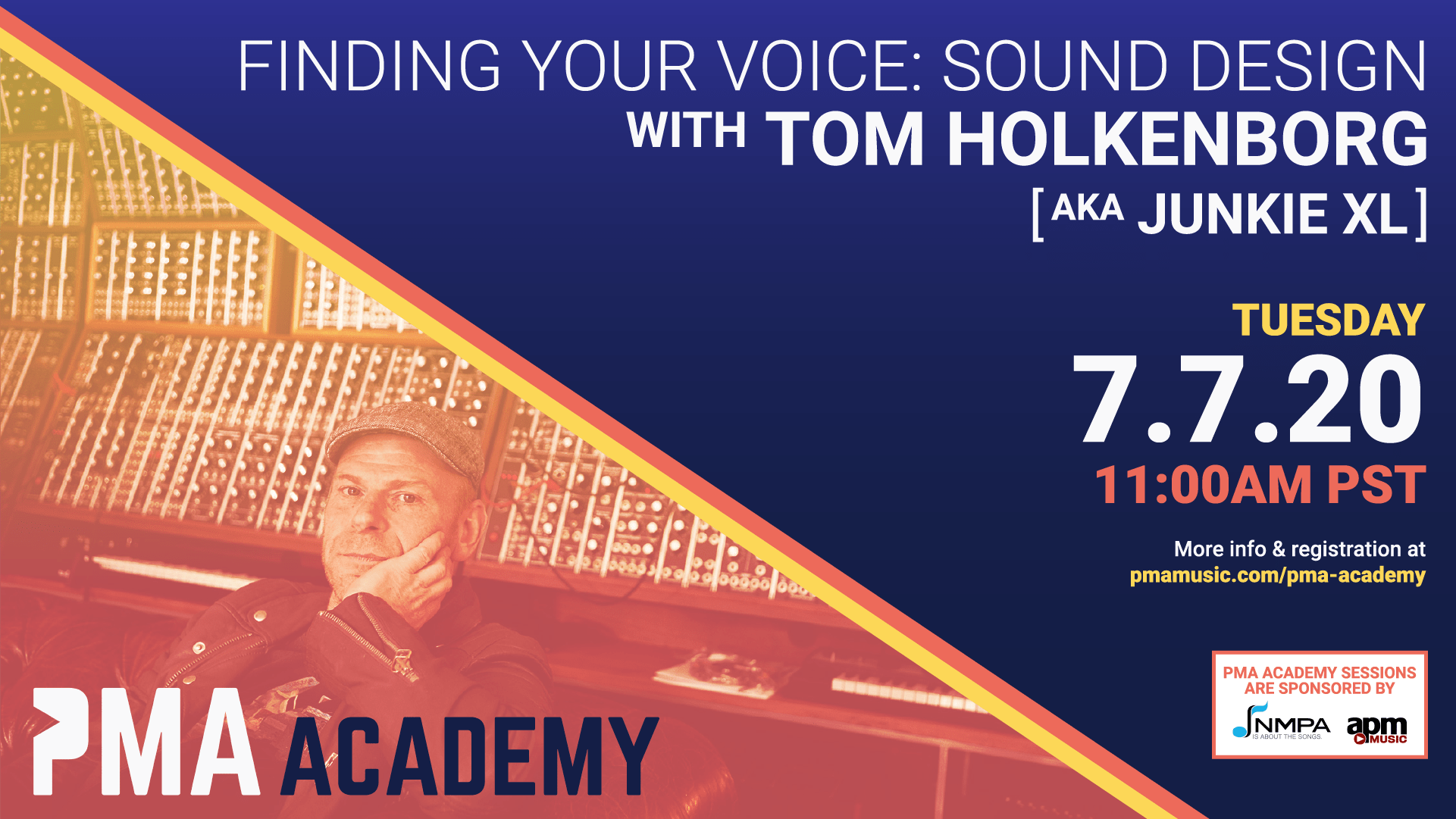
This very special tutorial is led by one of the most in-demand film composers in Hollywood: Tom Holkenborg (aka Junkie XL).
If you’ve ever seen films like Mad Max: Fury Road, Deadpool or Alita: Battle Angel (just to name a few), you’ve no doubt felt the impact of Tom’s mastery of sound design. Known within the industry as a “full-contact composer”, one of Tom’s biggest calling cards is that he does so many things himself—including creating vast sound libraries all his own for nearly every project he works on.
This webinar covers Tom’s unique process of sound design; a process that’s helped craft one of the most recognizable and signature sounds in modern day film scoring. The goal? Getting you informed and inspired to craft your own unique voice as you grow as composer and producer.
Topics include sampling, sound exploration, building your own libraries, modular synthesis and much more.

All media has been impacted with the expansion of digital services, and the advertising industry is no exception. This panel will dive into how these changes relate to production music usage, what’s changed in this sector of the industry and what the future looks like for production music in advertising.
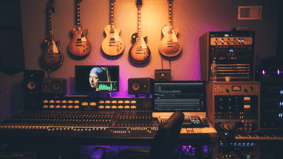
The Digital Demo Derby serves as an opportunity to get quality feedback from industry experts. Each quarter, we will utilize a different set of requirements for submissions, including but not limited to: genre, placement purpose (ie. for advertising, video game, documentary, sports, etc.).
In each round, we will select three composers to be reviewed by 2-3 industry experts. Each reviewer has the opportunity to select one of the three entrants for a 1 on 1, 30 minute meeting. Those selected will be notified by email.
Requirements for Q1 submissions:

The Music Creators North America (MCNA) alliance and its global affiliate the International Council of Music Creators (CIAM), together representing hundreds of thousands of songwriters and composers throughout the world, have recently launched a crucial, international education project designed to encourage all members of the music creator community to recognize the dangers inherent in assigning the rights in their works on a “full buyout basis.” I am writing to share their informative message below so that you may evaluate its application to your own career and circumstances:
To: All Music Creators
You may already be aware through personal experience that many music producers, distributors, and other music-related entities currently appear to be accelerating their attempts to utilize work-for-hire and other types of agreements to take advantage of uninformed music creators, insisting upon “full buyouts” of their musical works. Full buyouts, as currently defined, seek to acquire all rights and to eliminate any possibility of future royalty participation for creators beyond a one-time fee, even to the extent of eliminating the composer’s participation in the writers’ share of performing rights royalties.
In light of that troubling trend, we urge you to read the SCL’s current Buyout Study carefully (available at https://thescl.com/news/defining-buyouts/), and to discuss with your legal and other advisors the potentially devastating ramifications of full buyouts to your career. Naturally, all individual decisions concerning such matters should take into account the unique circumstances of each individual music creator. Due to the potential dangers presented by full buyouts, however, we suggest that before “selling” all rights in your work without the provision for future royalty participation in some form, the securing of personalized legal and accounting advice should be considered as absolutely essential to protecting your rights in the manner that is best for you.
To assist you and your advisors in evaluating various agreements that may be presented to you for signature, here are some examples of clauses that may currently be in circulation in various forms that should be subject to the highest levels of scrutiny:
The scope of the language in the above examples can be read as running contrary to more than a century of custom and practice in the music industry. The traditional safeguards that such clauses seek to eliminate have for over 100 years served to protect and defend composer and songwriter rights, and to support the abilities of Collective Rights Management Organizations (ASCAP, BMI, etc.) to collect and distribute to music creators the revenue those rights generate when works are performed and enjoyed by the public. It bears repeating that what’s important for you and your advisors to consider is that if you give away all rights in the manner of a full buyout, you are giving away any chance of future income from your music for the project, even as the producers go on to exploit the work and earn potentially substantial revenues for themselves. As such, it is prudent to take seriously the potential threat presented to you by the full buyout trend as you discuss these matters with your advisory teams.
The Collective Management system was put in place many decades ago to ensure that as a project succeeds, music creators will have the opportunity to receive a fair share of the resulting proceeds. Your score or song is a hugely important part of the project to which you have contributed, and the Collective Management system recognizes and protects your right to fair remuneration with that principle in mind. The protections afforded by this system have been hard won, and continue to be fought for at great expense. We therefore also suggest that as you make your individual determination as to what terms are or are not acceptable, keep in mind the long-term effects that your determination may have on the health of the entire music creator ecosystem in which you earn your living.
Finally, in order to help us address the full buyout issue on a Congressional basis if necessary, we ask that if you see language like the above examples (and provided you are not contractually or otherwise prevented from doing so – check with your legal advisors in this regard prior to revealing any information), please bring it to our attention. This will assist us in building a database of such clauses that may be extremely useful in helping to defend your rights, and those of all other music creators, in future legislative initiatives.
Members should also be reminded that their ability to collect performance royalties is by custom and practice, as embodied in their contract. There is nothing in the Copyright Law that mentions “writer royalties”, so there must be language in the contract stating clearly that the writer has the ability to collect their share of performance royalties directly from their PRO.
We look forward to your input on this important issue, and to your assistance in carefully monitoring the situation in anticipation that seeking governmental assistance and oversight may be necessary to fully protect your rights to fair remuneration.
In regard to the collection of the data referred to above, the PMA will be pleased to receive and pass along to MCNA any such information you may wish to convey. Please, however, remember to check first with your legal advisors to ensure that to do so is permissible under the terms of your agreement, and pursuant to other applicable facts and circumstances. Such information can thereafter be delivered to us at morgan@pmamusic.com or submitted below.

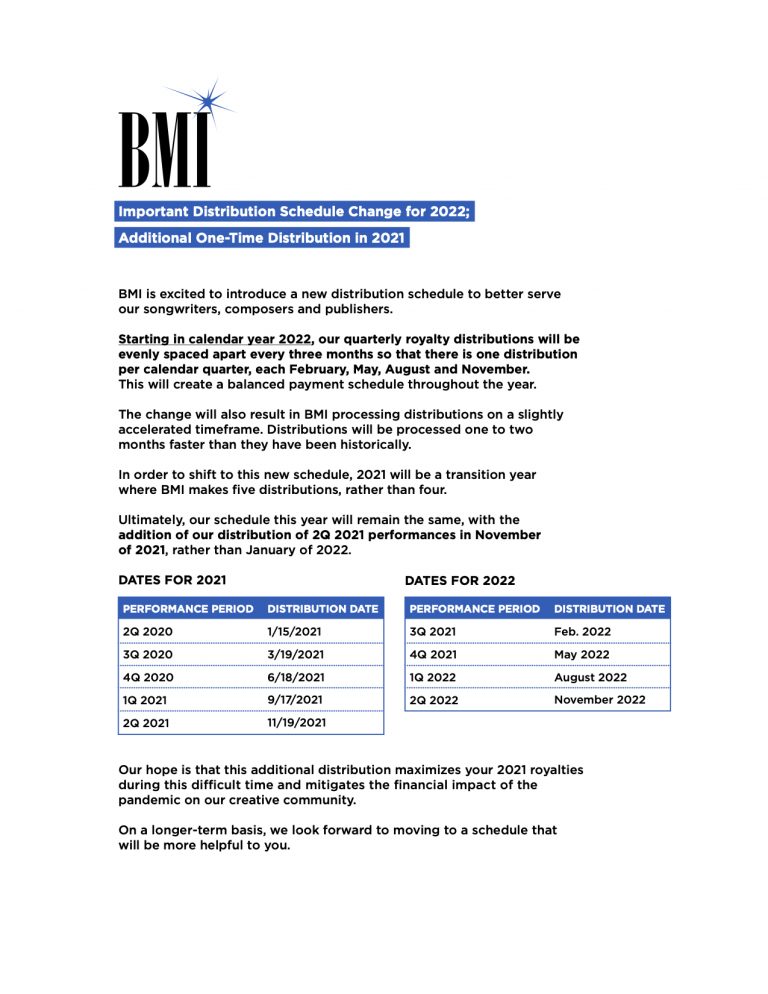
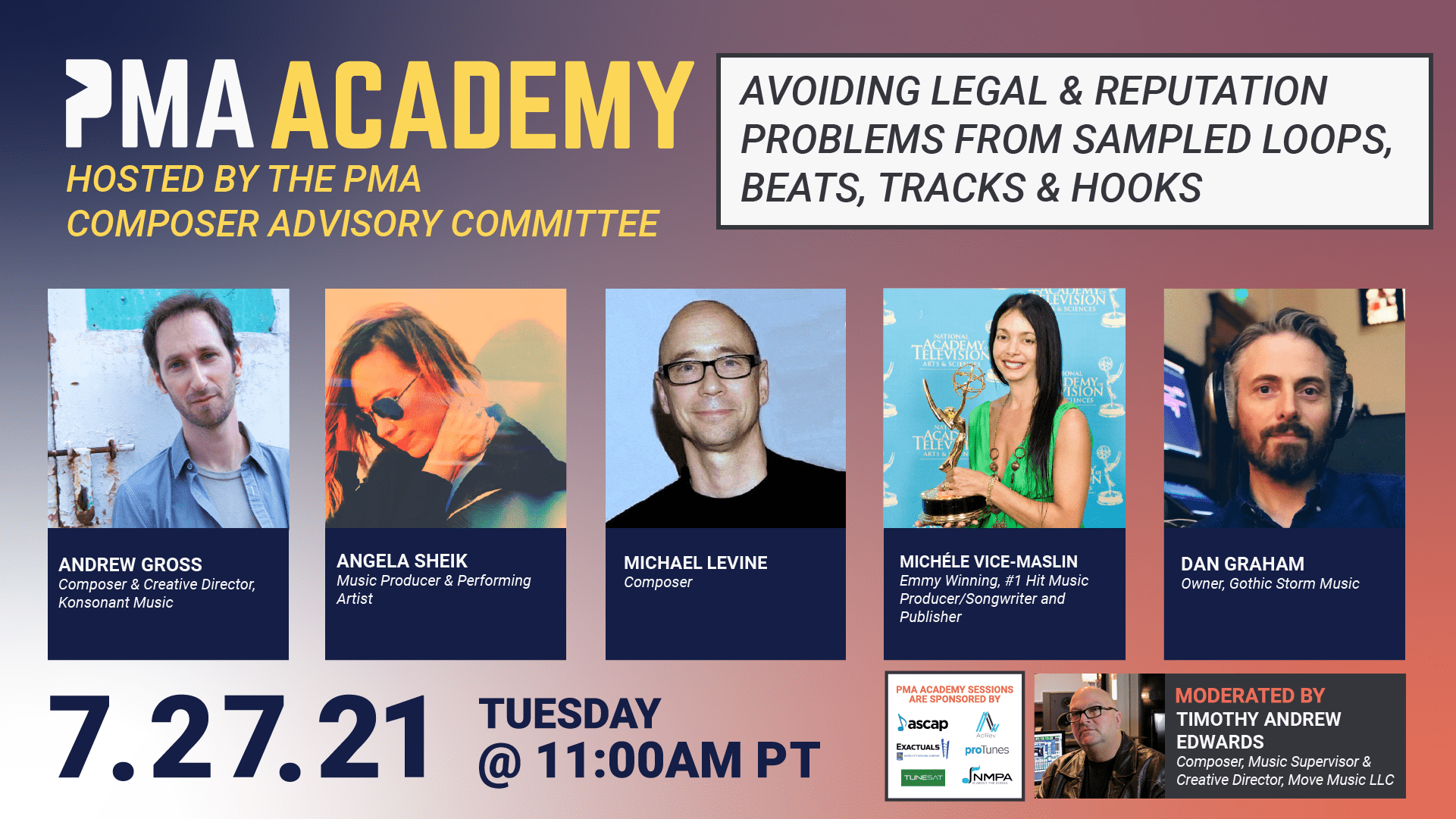
“Does this work include samples, yes or no?“
Have you ever seen this question in a contract or submission form? Has it ever given you pause? Most production music composers realize that they can’t sample unlicensed music from other recordings. And, they know that they’re usually safe using sampled instruments from their favorite piano and orchestral libraries. However, many don’t know about the serious problems from using even LICENSED pre-composed loops, beats, tracks and sample packs which have recognizable hooks and phrases, for example vocals, instrument phrases and complete grooves. Not only do some sample library End User License Agreements (EULAs) outright prevent many sync uses, but even where there are no legal restrictions automatic tune recognition software is triggering copyright claim clashes between different publishers, causing infringement accusations and reputation damage for composers and publishers. They are also unpopular with publishers and clients because they lack the originality that they expect. In response, production music publishers are increasingly banning these type of sample uses, so it’s important to know the facts.

How they recommend libraries and composers approach royalty tracking? What is the best method for composers to learn PRO methods for defining their rates for broadcast television royalties?
As I mentioned on the panel, there are many factors that affect what a particular performance royalty payment will be for any type of use. One first has to look at the license fees being paid to the PRO by a particular media (network tv, cable, streaming services, radio, etc.). These fees are arrived at either via voluntary negotiations with industry wide committees, individual users (broadcasters, streaming services, etc.) or federal rate courts, mandatory arbitrations or other types of dispute resolution procedures.
The number of total performances in a quarter in a particular media also comes into play. In the audio-visual area (broadcast tv, streaming services, cable, etc.), many different factors come into play including Type Of Use (score, visual vocal, background vocal, theme, logo, promo, trailer, jingle, copyrighted arrangement of a public domain work etc.) as all have different values relative to each other. Time of day and audience measurement of the show, duration of the use, history of past performances, whether the composition is eligible for a bonus payment and what type of PRO license the user is paying under (blanket, per-program, carve out/adjustable fee blanket, through to the audience, direct or source, etc.) all come into play in determining a final royalty payment.
Our book, “Music, Money and Success: the Insider’s Guide to Making Money in the Music Industry” (8th edition) contains a 60 page chapter on ASCAP, BMI, GMR and SESAC and goes into detail as to the payment formulas and rates.
As to tracking, there are many companies and systems employing either fingerprint, watermark or other forms of music recognition technology (MRT) including BMAT, Soundmouse, SourceAudio, Shazam, Numerator, Tune Sat, Landmark, Nielsen, Gracenote, Audible Magic and DJ Monitor, among others. A number of these companies are in partnerships with the U.S. PROs helping to track and identify musical compositions on television, radio and other media. It is important to remember that this technology only identifies recorded music. As to each particular PRO, both in the U.S. and in foreign countries, it is best to check directly with them as to what technology and music recognition systems they are currently using.
Keep in mind, correct cue sheets as well as correct registrations are essential in getting paid what you are due. For any type of audio-visual production, cue sheets are always necessary. Digital fingerprinting technology has now also entered into the cue sheet creation process. As to the registration of any work, it is important that you understand each PRO’s requirements needed for a correct registration as the requirements differ based on the type and use of a work. In some cases, only cue sheets are necessary. In others, cue sheets and individual registrations are needed. For example, commercials, movie trailers, promos, infomercials and public service announcements require additional information than is normally the case with other types of uses. Always check with each PRO’s website or staff for up to date registration and other requirements.
With most of the business world embracing technology, why have the PRO’s been slow to adopt a technology that more accurately detects performances of my music around the world?
My understanding is that many of the major PROs around the world are currently using sophisticated tracking systems which are being updated as technology permits. Again, one should check with each PRO as to the technology being utilized.
As terrestrial television is increasingly challenged by streaming and OTT platforms, how can we best ensure composers’ royalties aren’t undermined?
It is important that any new type of user, whether in traditional media or in the online/digital world, have an appreciation of the role that music plays in its productions. In many cases that is evidenced in the license fee negotiations between the user and the PROs and other collection agencies as well as with other copyright owner representatives (music publishers, agents, lawyers and managers, collective bargaining entities, etc.). The producers of audio-visual programming are also important in the equation.
One also has to understand that in the online world (audio and audio-visual streaming services, etc.), there are many trillions of performances occurring and being processed annually as opposed to the much more limited number on broadcast television and cable (of the 5 trillion performances being processed by ASCAP and BMI annually), 98% are digital). Consequently, per performance values vary greatly depending on whether a performance is on a traditional media outlet versus a streaming service. For example, in a recent quarter, 1 network television primetime series theme performance would need in the area of 6 million views on an audio-visual streaming service to equal the same amount of composer or publisher royalty.
It is important to note that as viewership migrates to these AV streaming platforms, their revenues and license fees will grow resulting in increased performance royalties for composers, songwriters and music publishers. In time, these services will most likely eclipse the traditional broadcast model in viewership and as a source of performance royalties . It is critically important that composers strive to retain their performance royalties in their work-for-hire production music agreements during this media transition.
As sampling technology allows for increasingly convincing music production, is there any value in recording real instruments and ensembles or is it simply a waste of money?
Live instruments always improve the quality of any type of recording. Many times, you will see an underlying electronic bed with select live instruments added subsequently. In most cases, it’s a budget consideration.
When providing tracks for library music labels, it seems to be the norm to give up publishing for eternity and the world so when is it legitimate to have an end date or some form of limit depending on the profit made or other? Especially if there is no upfront fee paid for the track?
As was discussed on the panel, in “work for hire agreements”-whether they occur in the production music area, feature film or episodic television area, the actual creator of a work is not the legal “author” of the work. The employer/buyer/company becomes the author and exclusive owner of all rights under the U.S. Copyright Law. There is no termination of copyright ownership right for the territory of the U.S. if a composition is a work-for-hire.
Is it realistic for a lesser known composer writing for a music library to ask them to pitch in for lawyers fees?
Under the heading, “I suppose anything is possible in a negotiation depending on bargaining power”.
“Company shall pay composer 50% of net receipts received by company prorated by composer’s respective writer’s share”? I am curious what the term “prorated” means in this sense?
The term “prorated” has to do if multiple writers are involved in a composition. For example, if the net receipts 100% writer amount came to $100. and there were 2 equal writers on a composition, each would receive $50. If there were 3 writers, each would receive $33.33 each.
If you are registered with BMI, is that enough? Should one also register with SoundExchange? How do these entities work together or not?
ASCAP, BMI, GMR and SESAC are performing rights organizations (PROs) which license users (radio, broadcast television and cable, streaming services, bars, concert halls, universities, etc.) for any type of music use (audio, audio-visual, etc.). Songwriters, Composers and Music Publishers join or affiliate with these PROs for representation. This right of Copyright is known as the Performance Right and involves the underlying musical composition.
SoundExchange involves a limited performance right in Sound Recordings. This a statutory license created by Congress and applies primarily to non-interactive sound recording performances on satellite radio, (SiriusXM), Pandora and other non-interactive streaming services, the audio only music channels on cable television (Music Choice) and certain business establishment audio music services (Muzak, DMX, etc.) It is an AUDIO only right and has nothing to do with any audio-visual presentation or download. SoundExchange is the sole entity designated by the Copyright Royalty Board to collect royalties paid by services operating under the statutory license.
Record companies, recording artists and background singers and musicians register with SoundExchange and all royalties are split 50% to the sound recording copyright owner (the label, normally), 45% to the featured artist and 2.5% each to background musicians and vocalists on any recording. SoundExchange collected 963 million dollars in 2019 and distributed $908 million dollars and has become a major source of income for creators. As there is no fee to register, anyone involved in any type of recording should join SoundExchange.
What do you think the percentage of production music songs actually get used?
There are many entities these days providing production music in its many forms. As the majority of this recorded music is already pre-cleared for both the musical composition and master recording, you literally have a “universe” to choose from – a universe that is continually expanding with new offerings. Based on the increasing quality of the music and recording as well as the diversity of composition, the use of production music has increased substantially over the years.
Would you be willing to share the document with the survey data you compiled on ranges of rates for different uses, media type and number of plays?
Basically I mentioned figures during the webinar as examples of some recent years PRO royalties for certain types of uses-score, themes and feature performances- on network primetime television (normally the highest paying uses in my experience) as well as various basic and pay cable systems and audio-visual streaming services. As I mentioned previously, there are many factors that affect the value of any type of performance starting initially with the license fees negotiated for that media and the specific payment formulas of each PRO for a particular type of use (keep in mind, that the 4 U.S. PROs have entirely different payment formulas and payments for every type of use and media).
In order to illustrate the importance in any royalty formula of the license fees negotiated for a particular area, I used an example of 1 minute of score for a primetime network tv show, a pay cable channel, a basic cable movie channel and an audio-visual streaming service. Based on the many factors involved in determining values, the composer or publisher royalty ranged from $120-$225 for the network example, $20-$40 for the pay cable channel, $3-$5 for low end movie channel. For the streaming service, I had $18 for 1 million views. These numbers are for illustration purposes only as many factors can either raise or lower these numbers. The point being, where a program airs is the starting point of the royalty equation.
A production music library wants 50% writers share…is it worth it? So hard to find work, it’s hard to say no these days.
As I stated during the webinar, I have always taken the position during my entire career that a writer’s share should only be attributed to the writer as well as any other collaborating influence or participant.
Comments by Todd Brabec – 7/6/20
* The comments and opinions expressed above are those of Todd Brabec alone.
* For more information on film, television, video game and production music scoring and writing original songs contract clauses referred to in the webinar, see the Television, Motion Pictures and Video game chapters in the 8th edition of “Music, Money and Success”.